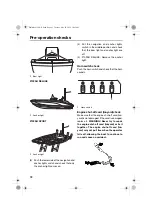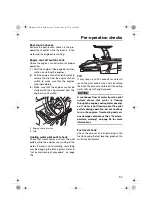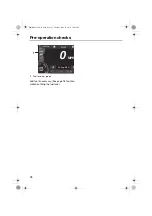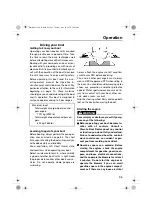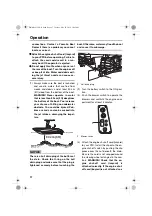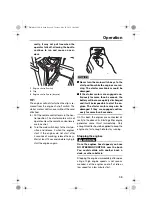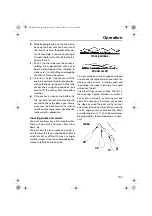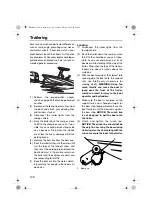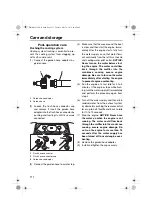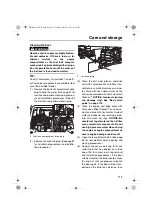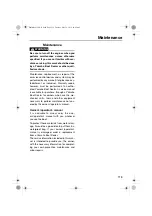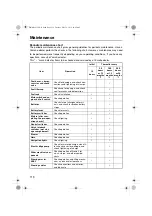
Operation
104
(3) While keeping tension on the line, slowly
back up the boat until you have let out
line that is 4–6 times the depth of the wa-
ter. For example, if you are anchoring in
10 feet of water, let out 40–60 feet of line.
Secure the line.
(4) Pull on the line to be sure the anchor is
holding. Also, periodically check your
boat’s position against the shoreline to
make sure it is not drifting and dragging
the anchor. Reset if necessary.
(5) To pull in (“weigh”) the anchor, start the
engines and move forward, keeping ten-
sion on the line as you pull it in. When the
anchor line is straight up and down, pull
hard to lift the anchor from the bottom
material.
(6) If the anchor is stuck on the bottom, try
this: Let out a few feet of anchor line and
secure the line to the boat, again. Slowly
maneuver the boat around the anchor
until the anchor pulls loose. Keep the line
taut during this procedure.
Crossing wakes and swells
You will not always have flat, smooth water.
There will be swells and wakes from other
boats, etc.
The best way to cross wakes and swells is
with the least jolt to you and the boat. Small
swells are not as difficult to cross as larger
swells or wakes. Crossing a sharp wake gives
more of a jolt than a broad swell.
To cross a wake or swell, change your speed
and choose the angle at which you cross the
wake or swell. Usually, a slower speed and
“quartering” the wake (crossing at an angle)
will reduce the jolt.
Two other things you may notice. The first is
that crossing a group of wakes or swells is
not as easy or smooth as crossing just one
wake. The second is that when you quarter
the wake or swell, the boat will try to steer
away from the wake or swell. When crossing
at a 45° angle, you may not notice this, but at
a smaller angle, say 10°, it can be very strong.
Be prepared to steer and balance as neces-
sary.
Sharp wakes
Broad swell
Wake
90˚
45˚
10˚
SportsBoat_F4A12.book Page 104 Tuesday, May 28, 2019 10:42 AM




